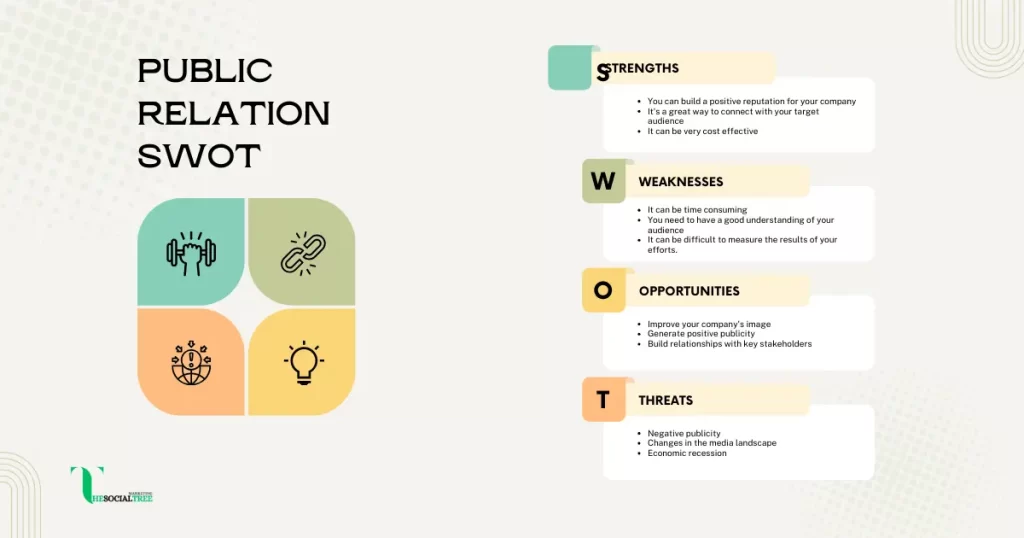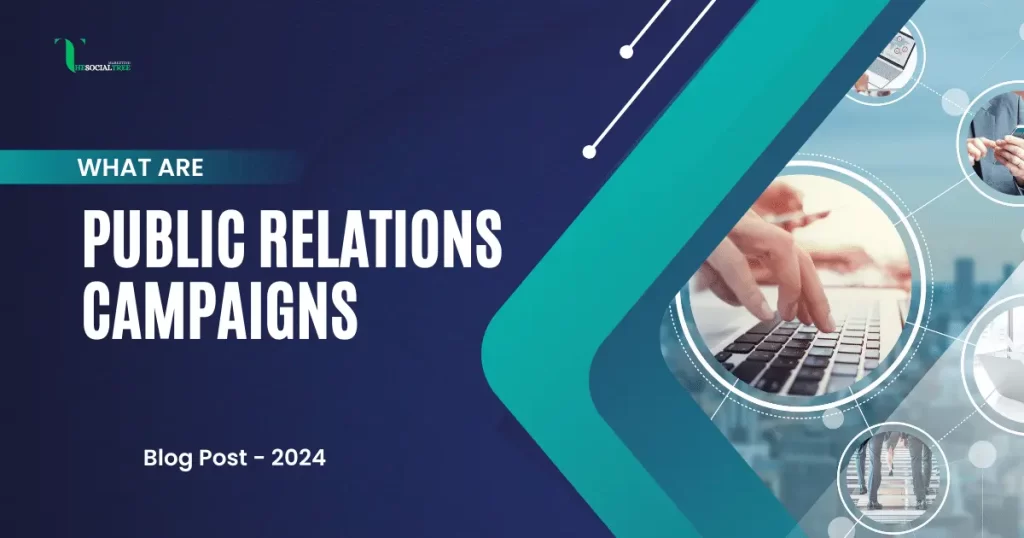Table of Contents
TogglePublic Relations Campaign
As we can understand from the name PR campaigns focus on building strong relations between businesses and customers. An organization or individual’s strategic and coordinated effort to achieve specific communication goals and influence public opinion is known as a public relations campaign. It includes planned activities, and tactics designed to shape perceptions, build awareness, and foster positive relationships with the target audience.
Additionally, PR campaigns are used to establish relationships, shape public opinion, and influence behavior. In these campaigns companies use the strategy of compelling stories that resonate with their audience, making them feel connected to their brand and driving them to take action.
A public relations campaign helps to maintain your brand’s positive reputation and image. It includes maintaining and reducing potential crises, addressing public concerns, and demonstrating your company’s commitment to social responsibility and social practice.
Moreover, PR campaigns are different from marketing and advertising. While usually people consider the same, PR campaigns are not directly about selling products or services. It is also about managing and improving a business’s reputation. PR campaigns are used to shape public perceptions and influence their opinion.
Public Relations campaign is not about directly selling a product or service. It is used to maintain and improve the brand’s image. It is also about telling a story that matches strongly with the target audience and establishing relationships with stakeholders.
In opposite, marketing and advertising are directly related to sales. Marketing and advertising are especially used for the promotion of a brand or service, target a potential audience, and compel them to make purchases.

A public relations campaign focuses on establishing relations with the public. A public relations campaign is also known as a PR campaign. A public relations campaign is planned and executed carefully. The effect of a PR campaign is noticed by its ability to get the desired results. Besides, you can reach the target audience easily. A PR campaign also creates a significant impression of your brand.
A public relations campaign can launch successfully through many strategies, such as setting clear objectives, understanding the audience, and crafting compelling messages. Moreover, choosing suitable distribution channels, and establishing relationships with media are included in public relations campaigns.
Effective Public Relations Campaign
1- Setting clear objectives
It is mandatory to set clear objectives, before launching a public relations campaign. It guides how you can spread awareness of your brand, increase its reputation, and improve its image. By setting clear objectives you can tailor your message and get the desired results.
How you can set a clear objective for a public relations campaign?
The answer is very simple follow the below steps and launch your effective PR campaign.
Your Goal: Ask yourself a question, what is your PR campaign goal? If you define a clear goal you are on track. A clear goal includes all questions related to your product or service. For instance, ask questions from yourself or the customer what is the actual need or desire of a PR campaign? i- want to increase brand awareness? ii- improve brand reputation? iii- Wanna launch a new product? iv- more website traffic? v- Generating leads? and many other related questions. Once you have answers to all these questions your work becomes meaningful.
2- Understand your Audience
Audience understanding for effective communication is necessary. To understand your target audience, collect information about your target customers and identify demographics. Also consider their interests, preferences, and media consumption habits.
In this way, you can tailor your message and select the appropriate communication channel to reach them. You can say audience understanding is a fundamental part of a public relations campaign.
How to understand the target audience?
- Market Research: You should do detailed and comprehensive market research. It is your first and foremost step.
- Create Buyer Persona: A detailed buyer persona helps to understand ideal customers. Buyer persona includes goals, challenges, demographics, and pain points.
- Social Listening: Engaging in social listening will help you understand your target audience.
- Competitors Analyses: Give an eye on your competitor’s public relations campaign.
Moreover, audience segmentation will help you to understand the target audience in a better way.
Tools: You can get help from analytics platforms like Google Analytics.
3- Compelling messages
After understanding your audience, your next step should be to craft a captivating message that strongly matches your target audience. Your message should be precise. Make sure to avoid complicated language, which can affect your communication.
How to write a good message?
- Understand Your Audience
- Easy Wording
- A Clear Message
- Highlight Benefits
- USPs
- Write as a Story
- Use Visual Content
- CTA
- Use Authentic Approach
4- Choosing the appropriate Channel
There are various channels available for communication in the world of digital marketing. Select the appropriate channel for campaigning. Marketers make sure to know where their audience spends their time online and how they want to get information.
PR campaigns can easily maximize their reach and impact by choosing the right communication channel.
5- Establishing relationships with stakeholders
You can build strong relations with stakeholders through PR campaigns. It includes connecting with many stakeholders’ customers, employees, investors, and other community members.
Your PR campaign should be transparent, authentic, and tailored according to stakeholders’ interests and concerns.
6- Managing Crisis Effectively
Crisis management plays a vital role in public relations campaigns. It provides help for unexpected conditions and handles them. Crisis management involves identifying potential crises, developing response strategies, creating communication channels, and training employees during such times.
Note: Transparency is very important in crisis management.
7- Success Measurement
For effectiveness and informing future strategies, success measurement in PR campaigns is very important. Measurement includes media mentions, website traffic, social media engagement, and brand sentiments should be identified as aligning with your objectives.
Make sure to monitor these metrics and analyze the data to measure the impact of your efforts.
A public relations campaign is very powerful and effective. PR campaigns can shift social values, spread awareness about critical issues, and motivate many people to take specific actions. It is not about just selling something. It can affect the overall performance of your business.
Conclusion:
PR campaigns are a very crucial and powerful tool for establishing relations, shaping perceptions, and achieving specific desired objects. You can create impactful campaigns that resonate with your target audience by crafting compelling messages and choosing the right channels. Make sure to prioritize transparency, authenticity, and effective communication, and be ready to adapt to changing circumstances. You can master the art of PR campaigns with strategic planning, creative execution, and proper measurement.

